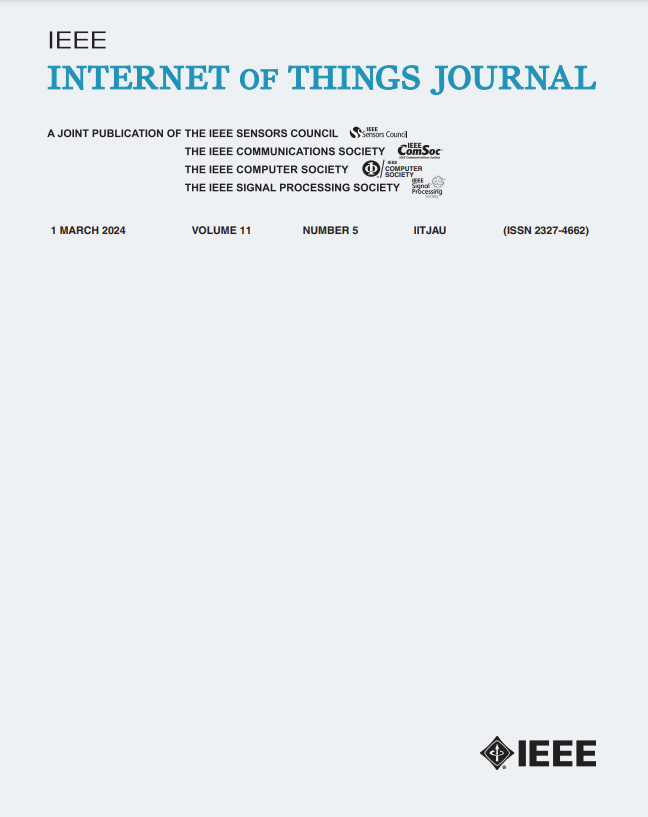FIDSUS: Federated Intrusion Detection for Securing UAV Swarms in Smart Aerial Computing
IF 8.9
1区 计算机科学
Q1 COMPUTER SCIENCE, INFORMATION SYSTEMS
引用次数: 0
Abstract
The dynamic environment of UAV swarms in forest management is characterized by communication instability, heterogeneous nodes, and frequent topology changes due to challenging terrain. These systems are vulnerable to network attacks, requiring advanced intrusion detection technologies. Traditional methods struggle with rapid changes due to data privacy concerns and centralized computational limits, while existing federated learning (FL) algorithms lack robustness against client heterogeneity and dynamic data distribution, especially in complex forest environments. To address these challenges, we propose federated intrusion detection for securing UAV swarms (FIDSUS). FIDSUS improves intrusion detection systems by leveraging collaborative sensing among UAVs, enabling better monitoring and response to security threats in forestry. By quantifying the similarity between UAVs’ local feature extractors through an affinity matrix, FIDSUS guides the aggregation of feature extractors, improving detection capabilities. It also uses AI-driven aerial and distributed computing to enhance data processing efficiency and decision-making speed. The framework addresses data heterogeneity by cross-round feature fusion, improving detection in dynamic environments. Experimental results on the NSL-KDD and UNSW-NB15 datasets show that FIDSUS outperforms existing FL methods with a 4%–34% accuracy improvement. FIDSUS shows robustness and accuracy in dynamic environments, providing an effective solution for securing UAV swarms in forestry.FIDSUS:用于智能空中计算中保护无人机群的联邦入侵检测
无人机群在森林管理中的动态环境具有通信不稳定、节点异构、地形复杂导致拓扑变化频繁等特点。这些系统容易受到网络攻击,需要先进的入侵检测技术。由于数据隐私问题和集中计算限制,传统方法难以应对快速变化,而现有的联邦学习(FL)算法缺乏对客户端异质性和动态数据分布的鲁棒性,特别是在复杂的森林环境中。为了解决这些挑战,我们提出了用于保护无人机群的联邦入侵检测(FIDSUS)。FIDSUS通过利用无人机之间的协作传感来改进入侵检测系统,从而更好地监测和响应林业中的安全威胁。通过关联矩阵量化无人机局部特征提取器之间的相似性,FIDSUS引导特征提取器的聚合,提高检测能力。它还使用人工智能驱动的空中和分布式计算来提高数据处理效率和决策速度。该框架通过交叉特征融合解决了数据异构问题,提高了动态环境下的检测能力。在NSL-KDD和UNSW-NB15数据集上的实验结果表明,FIDSUS的准确率比现有的FL方法提高了4%-34%。FIDSUS在动态环境中表现出鲁棒性和准确性,为林业无人机群安全提供了有效的解决方案。
本文章由计算机程序翻译,如有差异,请以英文原文为准。
求助全文
约1分钟内获得全文
求助全文
来源期刊

IEEE Internet of Things Journal
Computer Science-Information Systems
CiteScore
17.60
自引率
13.20%
发文量
1982
期刊介绍:
The EEE Internet of Things (IoT) Journal publishes articles and review articles covering various aspects of IoT, including IoT system architecture, IoT enabling technologies, IoT communication and networking protocols such as network coding, and IoT services and applications. Topics encompass IoT's impacts on sensor technologies, big data management, and future internet design for applications like smart cities and smart homes. Fields of interest include IoT architecture such as things-centric, data-centric, service-oriented IoT architecture; IoT enabling technologies and systematic integration such as sensor technologies, big sensor data management, and future Internet design for IoT; IoT services, applications, and test-beds such as IoT service middleware, IoT application programming interface (API), IoT application design, and IoT trials/experiments; IoT standardization activities and technology development in different standard development organizations (SDO) such as IEEE, IETF, ITU, 3GPP, ETSI, etc.
 求助内容:
求助内容: 应助结果提醒方式:
应助结果提醒方式:


